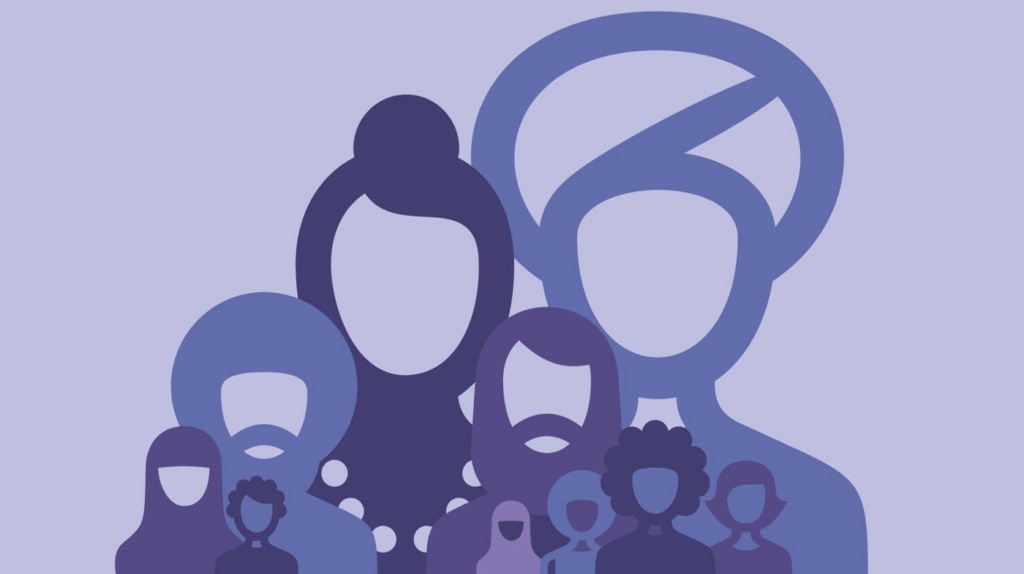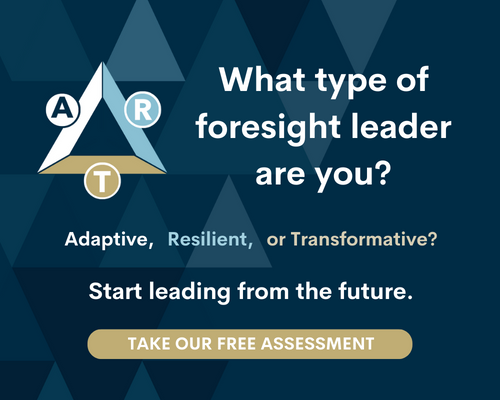A Superhero Named Complexity
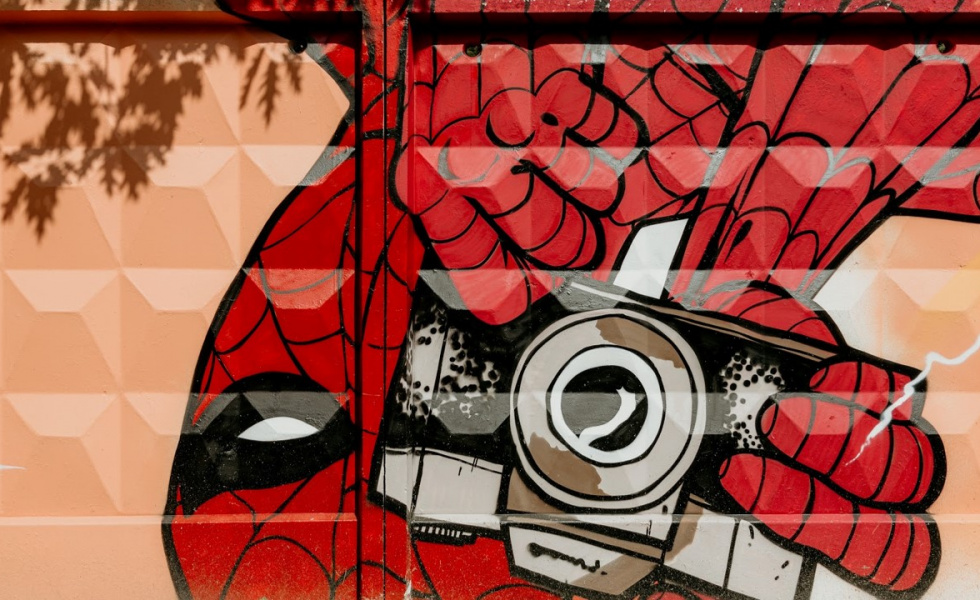
We need to flip the idea of the traditional “hero” on its head.
We love it when a story or movie has a resolution, or when the conflicts we face can be overcome with a straightforward answer. More specifically, we love it when all of our problems and solutions fit neatly into the confines of our prevailing mental models. We get exasperated and become belligerent when our stories don’t go according to a fixed script, or when our heroes don’t always wear masks and capes when defeating the villain.
We have been conditioned to expect our answers to come in the guise of easily recognizable responses — a secret signal that summons a faithful vigilante, a mystical mantra that precedes the transformation into a powerful being, or a mighty weapon that metes out justice on unsuspecting evildoers.
Great story, but one huge flaw. It’s nonsense. The world doesn’t work this way at all. That’s not to say that goodness — in all of its manifestations — isn’t a worthy and hopeful goal. Rather, we need a global awakening that allows us to embrace a pathway that isn’t paved with simplicity or linear thinking. Our new hero — our new global vision — goes by the name of Complexity.
In an article entitled “The age of the Citizen is coming”, the New Citizen Project’s founding partner Jon Alexander addressed the need to adopt a new mindset in order to move from crisis to opportunity. Though the article focuses mainly on our evolving needs around energy, he noted that new ways of thinking and acting must extend to all areas of our lives.
“The task, then, is to move to a new level of thinking. The opportunity lies in realizing, first, that the role of the consumer, and the associated commonplace that people are led by self-centered motivations, are not fundamental human truths: they are simply part of a story we tell ourselves, and a dying one at that. Second, that a new story is emerging to replace it. This is the story of ‘the citizen’ — a story that is best understood in contrast both to ‘the consumer’ and to the story that came before: ‘the subject’…
In the early days of the 20th century, we were ‘subjects’: the story was that if we all did as we were told by our betters, the best society would result. Coming out of the second world war, this story was replaced by ‘the consumer’. We gained the power to choose and the right to complain. As a shift from ‘the subject’, this was a liberating raise in status. The new story drove huge improvements in material standards of living across the world. What’s coming next is ‘the citizen’: as yet fragile and not fully formed, in the story of the citizen we are gaining the power not just to choose, but to shape the choices on offer; we are starting to work together in interdependence, seeking not just what’s best for ourselves as individuals, but as communities and societies…
Once you start to look at the world through this lens, you see the change happening in every aspect of society, everywhere. In politics, it is the shift from representative democracy — limited to the occasional consumer choice of the vote — to the participatory democracy of Taiwan’s Gov Zero movement, Better Reykjavik’s civic forum, Portugal’s nationwide participatory budget, and Mexico City’s crowdsourced constitution, for example. It is the shift in perception of the role of business: from exploitation to empowerment, from shareholders to stakeholders, from profit to purpose. Perhaps most importantly, in local communities, it is the shift from ‘consumers complaining’ to ‘citizens reinventing structures from the ground up’.” (1)
As Alexander stated, the well-worn story of escalating crises, endless wars, and inevitable human collapse is just that — a story. Such a story is not a fundamental truth, but rather a way of viewing the world that has been reinforced by attempting to apply old mindsets to new realities. Once you realize that new environments require new ways of seeing, it’s easy to understand why our world of ever-increasing complexity looks like a wicked problem rather than a wicked opportunity.
Do a search for “complexity” in almost any of the popular management magazines and journals online, and you will find a plethora of articles that paint a terrifying picture of a world in which complexity is our worst enemy. Some of the titles sound like they came straight out of a horror movie where the last humans on Earth must defend themselves against a deadly pandemic or an alien invasion.
- The Embarrassment of Complexity
- The Cure For Complexity
- Overcome the Complexity Within You
- Take Complexity Out
- Kill the Complexity
Of course, our attempt to overcome or “kill” complexity makes sense in a world where linear or reductionist approaches solve our “wicked problems,” but when has that ever really been the case? And in today’s environment of unprecedented change and multiplying complexity, that advice is similar to suggesting that we stop breathing in order to avoid the flu. One of the first things we tell our clients is if they attempt to kill complexity in order to successfully navigate the future, they might as well quit leading, innovating, and strategizing altogether. Whether building companies, steering governments or achieving personal goals, avoiding complexity isn’t the answer anymore. As a matter of fact, just the opposite is true.
Yes, the world is becoming more and more complex, but this actually means that the social and business landscape is ripe for opportunities to re-frame the world. Growing complexity shouldn’t paralyze us; it should instead act as the birthplace for explosive idea generation and a new group of ‘opportunity engineers’. As we noted earlier, it’s not the landscape of accelerating complexity that is the problem, but rather our mental models that are attuned to an era in which change was more easily quantified and where the world was less connected. That world has been gone for a very long time, but our attempt to apply old solutions to new ideas and problems has finally caught up with us. We have reached a tipping point in exponential complexity that is forcing us to mature — or face a complete systemic collapse and reset of our social, economic and organizational structures. The choice is ours.
Much like the move from the agricultural age to the industrial age, this new era is bringing with it a new set of underlying concepts and rules about how the world works. Driven by the complex interweaving of exponentially advancing technology, global knowledge-creation, a transient and digitally-liberated workforce, the formation of collaborative and informal economic systems, the rise of disruptive educational models, and rapidly fluctuating demographics, these new underlying concepts are no passing phase that can be “overcome” or “killed” by doubling-down on the thinking from a previous age any more than the Industrial Revolution could have been avoided by reinforcing agriculturally-minded principals.
Any new view of the world requires a new way of measuring and a new set of metrics to help us make sense of our unfamiliar surroundings. In previous eras of human history, we could more readily depend on quantitative measurements to help us solve problems or inspire innovation. However, as any organization or system becomes more complex, it transitions from quantitative to qualitative metrics. As innovation, design, and sustainability expert Dr. Daniel Christian Wahl states in Designing Regenerative Cultures,
“What we need is a more nuanced understanding of how as living systems mature they shift from an early (juvenile) stage that favors quantitative growth to a later (mature) stage of growing (transforming) qualitatively rather than quantitatively.” (2)
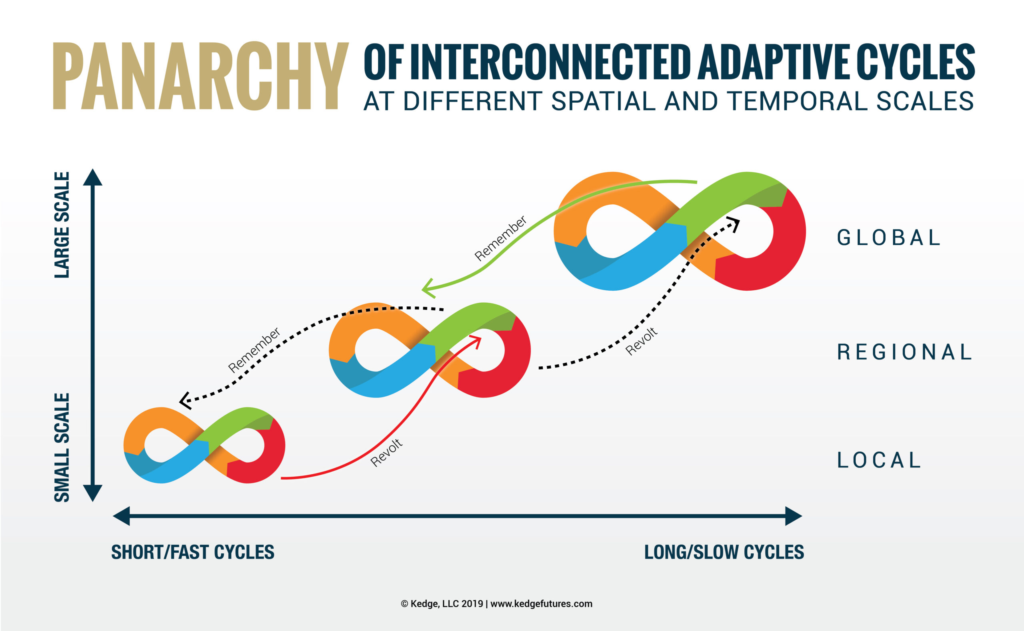
The concept that more complex and qualitative measurements are needed to guide us into greater innovation and creativity is certainly not a new idea. While the theory of “scientific management” was being popularized by engineer and consultant Frederick Taylor in the early 1900s, a social worker and management philosopher by the name of Mary Parker Follett was touting a much different path toward organizational transformation. While Taylor’s theory touted workplace efficiency through training workers and managers in engineering principles — and thus set in motion the prevailing zeitgeist of linearity, reductionism and short-termism — Follett pointed out that such a view did not account for the increasing complexity or “non-linearity” present in organizational environments and ecosystems. As management professor Ahmet Hakan Yüksel stated in his essay “Tracing Back the Signs of Complexity Thinking in Management: Mary Parker Follett Re-visited,”
“Modernist organization theories regarded actions as sequenced and actors behave mechanistically in their endeavor to accomplish rationally declared ends to fulfill organizational goals (Pettigrew, 1990). The tendency to hold reductionism, determinism and equilibrium as core principles was prevalent in organizational and managerial studies — indeed, all social science was influenced by this paradigm (Dooley, 1997)… First, a mechanistic way of managing may render the organization incapable to adapt the changing circumstances in its environment. Second, a mindless and unquestioning organizational structure may arise, which stifles innovation driven managerial endeavors. Third, when the interests of those working in the company do not overlap the goals the organization was designed to achieve pernicious effects will be inevitable… the frameworks commonly used in organization studies are not capable of capturing the actual complexity confronted by the managers, rather ‘they confine complexity by locating it within organizational boundaries, as if managers were like Weberian officials trapped down in an administrative bunker, grappling more or less competently with neatly parceled chunks of complexity…”
Having laid out the case that mechanical and deterministic organizational models do not allow us to be complexity-ready, Yüksel then summons the spirit of Follett to help us embrace our age of exponential complexity,
“…under the prevailing conditions of global business climate, any attempt to design an organization to ensure structural stability is nothing more than an intellectual construction with limited capability to encompass all interactions between the agents (system components) given the constraints imposed by the modeller’s bounded rationality. Embracing nonlinearity in organizational studies calls for adopting a new mindset; one that supersedes what has been imposed by the machine metaphor. In complex (adaptive) systems, the focus is no longer on discrete components, events or systems, instead, interactions and networks that connect individual agents appear as the indispensable quality of such systems… Follett’s approach to the understanding of management was recognizably different in nature from the dominant stream of thought. Unlike the conventional scientific managers who based their ideas on the analysis of tasks via breaking them down into their constituent parts and artificially reconstructing them, she began with accepting the complexity of social situations and focused on the working group and the need to integrate individual and group efforts within the productive whole. She placed relationships in the centre of her conceptualizations. Follett argued that the fundamental organizational challenge is the ability to build and maintain dynamic and harmonious human relationships. Her key concepts such as ‘coordination’, ‘constructive conflict’, ‘integration’ and ‘power with’ are all centered on human relationships and they are all concerned with ways of promoting a creative dynamic in those relationships that is based on consensus. A clear evidence of her position against the mechanistic view of management imposed by modernism could be observed: ‘the idea of mastering the environment is unfortunate because we have carried it over into social relations; it becomes our duty to conquer all external circumstances, nature and other men too.” (3)
Creative Complexity
Might Taylor and other organizational theorists who saw efficiency and linear practices as king have been wrong in their assessment of the nature, purpose and potential of rising complexity? As Follett believed, could the rise of ever-increasing complexity, and the resulting need for increased qualitative thinking and non-linear measurements, be good for humanity? As it turns out, despite our struggle to adapt to this new world of unfamiliar change, the acceleration of complexity is actually a sign of increasing maturity. Think about it this way: When you have children, are they more complex when they are infants or when they grow up to be young adults? If you were an early astronomer attempting to map the stars and planets in the night sky, and you looked through your telescope into the vast reaches of the universe, would you see expanding simplicity? If you were building an online virtual world where more and more people were collaborating digitally, would it evolve to greater simplicity or greater complexity? From this vista, complexity means that we are maturing, and that growing maturity affords us a greater landscape from which to create grand solutions and unseen opportunities. As Wahl further states,
“Brian (Brian Goodwin, founding member of the Sante Fe Institute for Complexity Studies) argued that since natural, social or economic systems are best understood as complex dynamic systems, we can finally give up our ill-fated pursuit of ways to predict and control these systems. We are not supposedly ‘objective’ observers outside these systems, trying to manipulate them more effectively; we are always participants. He suggested that the insights of complexity science invite us to shift our attitude and goal to our appropriate participation in these systems, as subjective, co-creative agents. Our goal should be to better understand the underlying dynamics in order to facilitate the emergence of positive or desirable properties — emerging through the qualities of relationships in the system and the quality of information that flows through the system. We have to befriend uncertainty and ambiguity because they are here to stay.”
Beyond recognizing that an increasingly complex environment is a natural sign of maturity, researchers and professionals are also pointing out that complexity is the seedbed of unlimited human creativity. Such a befriending of uncertainty that allows us to facilitate the emergence of positive or desirable properties is what we call “creative complexity.” This generative idea reframes our view of complexity as a force that opposes progress to one that enables us to unearth creative solutions to seemingly insurmountable difficulties. Knowing how to harness and leverage complexity can lead us to new perspectives around our grand challenges, and help us to reach our “big hairy audacious goals.” Much like an ever-growing canvas, accelerating complexity is giving us more space on which to paint an unending series of unique masterpieces. As Columbia University Business School senior vice dean Katherine W. Phillips noted,
“The fact is that if you want to build teams or organizations capable of innovating, you need diversity. Diversity enhances creativity. It encourages the search for novel information and perspectives, leading to better decision making and problem solving. Diversity can improve the bottom line of companies and lead to unfettered discoveries and breakthrough innovations. Even simply being exposed to diversity can change the way you think. This is not just wishful thinking: it is the conclusion I draw from decades of research from organizational scientists, psychologists, sociologists, economists and demographers.”
Going one step further, the INSEAD emeritus professor of organizational behavior reinforces the idea that complex environments lead to greater creativity when she says,
“Some respond by seeking simplicity and, as a result, either revert to the stable status quo (which stunts growth) or ignore problematic aspects of the change to make the decision easier (but not necessarily wiser). Both coping mechanisms are counterproductive. To kick off a successful change effort, you must embrace its complex dynamics.” (4)
Northern Arizona University Professor of Science Education Jeffrey W. Bloom sees complexity as being even more closely connected to creativity. As a contributor to the book A Critique of Creativity and Complexity, he stresses the critical nature of diversity in giving rise to complex systems that in turn foster creative ideas and possibilities.
“In all cases, creativity is evident when ideas interact, change, and give rise to new ideas. Without diversity, the emergence of new ideas, new forms, new species is greatly limited. Without diversity, adapting and adjusting to new conditions are hindered or prevented. Without diversity, complex systems have no material for change.” (5)
Jennifer Gidley — educator, postformal psychologist and president of the World Future Studies Federation — agrees with Bloom’s assessment that complexity is a critical element in creativity. In addressing the need for increased practices of wisdom in 21st Century educational models, Gidley notes,
“Wisdom is creative, complex and integrative. Wisdom does not follow the straight and narrow, but meanders, pauses, plays with multiple options and looks around corners — curious for surprises… Multi-modal approaches to learning are very important in developing the multiple perspectives needed for wisdom to grow — as are some surprising and unexpected concepts… Wisdom is about waking up to multiplicity. Waking up — to our own presence and the presence of others. The complex wisdom embedded in the art of education demands being awake in every moment.” (6)
A perfect example of complexity’s exponentially-expanding role in cultivating creativity across the drivers of technology, society and culture is the ongoing development of the World Wide Web. Created in 1989 by computer scientist Sir Tim Berners-Lee as a means for people to connect across the Internet, the World Wide Web is now used by approximately 3.5 billion individuals on a weekly basis as a means to conduct business, access education, and purchase everything from household goods to personal entertainment. Looking beyond these extremely profound but basic functions, Berners-Lee saw a much greater use for the web than simply being an information highway for the masses. Addressing the deeper purpose and potential of the web, he famously stated in modern-day prophetic language,
“The Web as I envisaged it, we still have not seen it yet. The future is still so much bigger than the past.” (7)
Today, most of humanity can not even fathom the potentially profound changes that are at our doorstep through web-related advancements such as the Internet of Things — the ever-growing network of cars, homes, office buildings, furniture, clothing, and every other physical object you can imagine, all-connected and speaking to one another through the use of sensors, software, and smart technology; machine learning and artificial intelligence — the ability for computers to learn without being manually programmed through the use of pattern recognition, predictive analytics, and complex algorithms, as well as a whole host of sentient technologies and cognitive models that impact consumption, education, online search, digital assistants, drones and self-driving vehicles; or computer-to-brain interfaces and intelligent amplification — the direct communication between an enhanced or augmented human brain and any external computational device, including the use of information technology, neuroprosthetics, cybernetics and genetic engineering. Even if his quote about the long-term potential of the web was made without any knowledge of these emerging technological and human developments that have a direct connection to the evolution of the internet, one concept that Berners-Lee might have been visualizing was the idea of a “global brain” that was popularized in the early 20th century by the French philosopher Pierre Teilhard de Chardin. Expounding on the works of French philosopher Édouard Le Roy and famed Russian scientist Vladimir Vernadsky, Chardin perceived that the entire universe matures through greater complexity, which in turn produces increased consciousness and burgeoning creativity. He reinforced this idea through his work on the “noosphere” — the emergence of a sphere of thought that connects all human minds and encircles the entire earth. The rapid acceleration of cyberspace and digital worlds has advanced this sphere of complex thought, fostering a huge jump in the intentional evolution of humanity. In this sense, Berners-Lee’s world wide web has become an integral element in the rise of a “global brain” and one of the greatest inventions in human history.
Very few individuals would argue that greater creativity is a bad thing, but we continue to avoid the complex conditions that lead to creative environments. Bloom believes that there are at least two reasons why we demonized complexity in the first place: we confuse complexity with complication, and we fail to see ourselves as a part of a complex system.
“Our everyday use of the word complexity does not mean the same thing as “complexity” in the sense of complex systems. We often use “complexity” interchangeably with “complicated,” but within the context of systems it may or may not be complicated. Fundamentally, complexity describes the nature of systems that are autopoietic (Maturana & Varela, 1998). In other words, complexity describes the ways in which various systems maintain some degree of continuity. As living organisms, each one of us is a complex system… As human beings, one of the major problems we face is that we do not see ourselves as complex systems or as parts of even greater complex systems. We reduce ourselves to isolated individual “things” with no real connection to anything else. From that point of view, we can give the finger to someone else, dump toxic waste into the environment, over-fish a lake or ocean, and bomb other cultures without seeing the consequences for the well-being of ourselves, of others, and of the very environments of which we are a part.”
As Bloom noted, complexity and complication are not the same thing. Complexity is the natural order of all living and maturing systems. Complication is something we do to ourselves, and often when we are trying to separate ourselves from the complexity around us. We build barriers and silos, institute processes upon processes, and hold tight to the “way things have always been done” in order to simplify our businesses, our institutions, and our lives. We’ve been taught to fear the growing complexity, and as a result we end up not only killing creativity, but also escalating our wicked problems — problems that can be addressed through the application of creative complexity.
It’s time for us to put aside the heroes of old. We must embrace a new hero that flies in the face of centralized leadership, simplified processes or short-term solutions. We need to allow complexity to guide us into better futures. And to summon this hero, we only have to look inside of ourselves, both as individuals and as the whole of humanity united for transformational change.
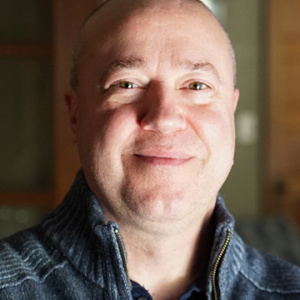
Frank Spencer
Co-Founder
Creative Director
In 2009, Frank founded Kedge – a global foresight, innovation, and strategic design firm which pioneered TFSX. Throughout his career, Frank has worked as a leadership coach and developer with entrepreneurs, social communities, networking initiatives, and SMEs, helping them in areas such as development, innovation, and networking.
Read More
